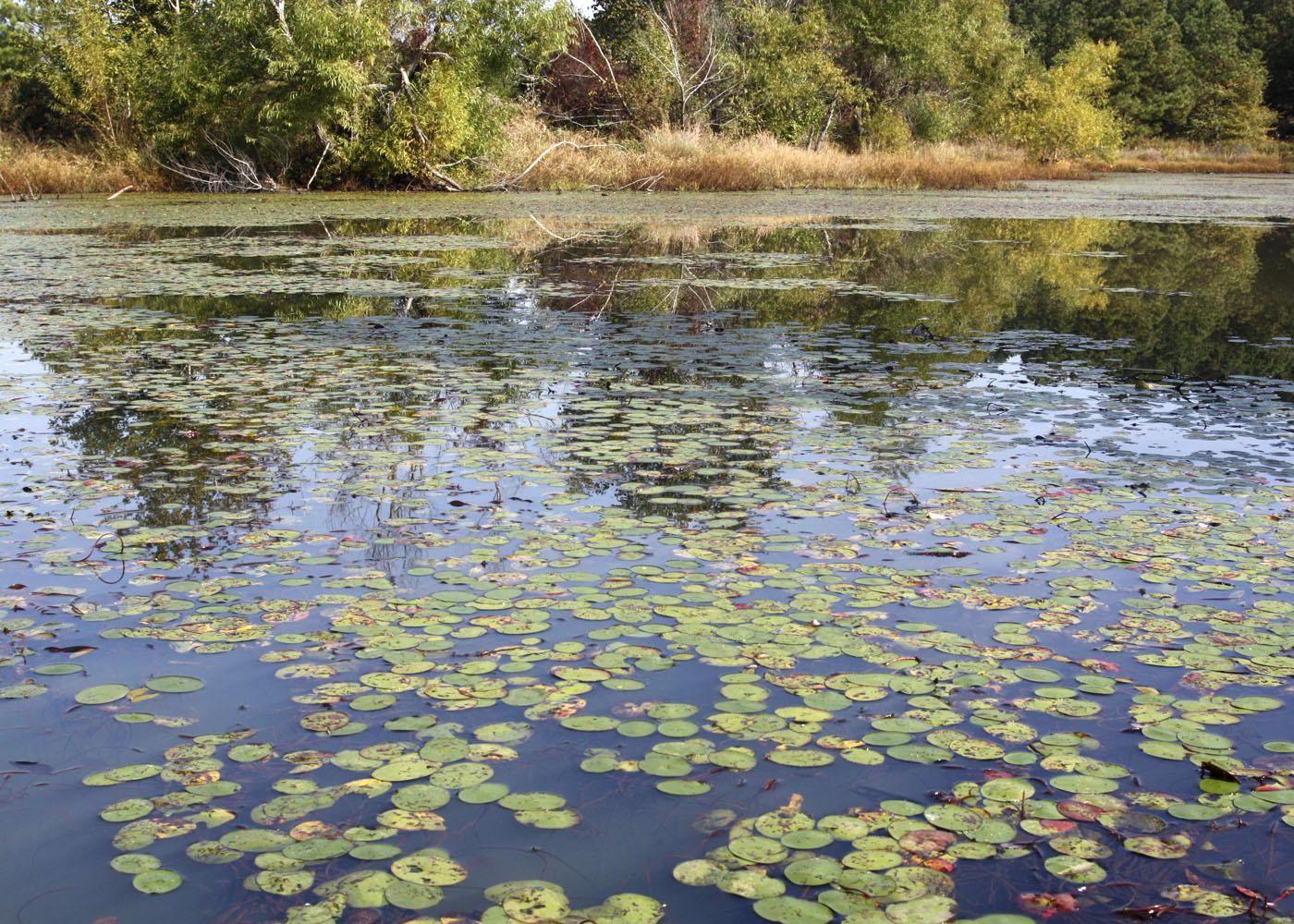Information Possibly Outdated
The information presented on this page was originally released on May 19, 2011. It may not be outdated, but please search our site for more current information. If you plan to quote or reference this information in a publication, please check with the Extension specialist or author before proceeding.
Spring pond work yields summer fishing fun
MISSISSIPPI STATE – Landowners with ponds have a checklist of spring maintenance chores that will result in quality fishing, swimming or boating experiences, and a newly updated Mississippi State University publication can help.
Spring is a great time to get a jump on aquatic vegetation control, said Tom Holman, fisheries biologist with the Mississippi Department of Wildlife, Fisheries, and Parks.
“Most of those plants will die back in winter, and as water warms up they’ll start growing again,” Holman said. “If you start now, when the plants are young, you can get ahead of the process.”
While prevention should always be the first step in vegetation control, some plants may become so abundant they interfere with a pond’s recreational use. If a landowner is unsure of the identity of the problem weed, it is better to ask an expert than to randomly select an aquatic herbicide.
“The important thing to do – before you think about herbicides – is get the plant identified,” Holman said. “You can spend a lot of money on the wrong chemical.”
Local county Extension agents, the Natural Resources Conservation Service or the Mississippi Department of Wildlife, Fisheries, and Parks can help identify aquatic weeds, based on a detailed digital photo or a sample. Then biologists can work with landowners to create a management plan based on the specific problem plant or plants.
Spring is also a good time to decide on a fishing strategy. For years, many pond owners practiced a “catch and release” approach to pond management in hopes of growing bigger fish. However, proper management requires harvesting fish so that others have room to grow.
This can be compared to gardening, said Wes Neal, assistant Extension professor at Mississippi State University’s Department of Wildlife, Fisheries and Aquaculture.
“If you plant onions from seed and want big onions, you have to thin them to allow space for the onions to grow,” he said. “If you want big bass, you have to fish and keep the smaller, more aggressive bass to give those bigger fish room and less competition for food. For example, you can have 100 1-pound bass, or 25 4-pound bass, depending on how you manage through fishing.”
Neal spent nearly two years working with industry partners to revise “Managing Mississippi Ponds and Small Lakes: A Landowner’s Guide.” He said it was designed to meet the needs of clients based on the calls and site visits made across the state.
“We’ve added entire sections to address assessment and management, including a photographic guide to pond weeds,” Neal said. “It’s important to manage aquatic vegetation, whether through biological weed control in the form of grass carp, or by chemical, mechanical or physical means.”
The revised edition of the publication offers step-by-step advice for stocking ponds of different sizes and managing for various goals, whether it’s trophy bream, trophy bass, hybrid sunfish or catfish. Full-color photos and charts clarify detailed information on stocking rates, pond balance and weed control. A pond management calendar can help landowners keep track of needed tasks. A harvest chart can make keeping records of fish populations easier.
“Some landowners ignore their ponds, but Mississippi’s ponds are vitally important for many reasons,” Neal said. “Not only do they raise property values and provide recreational opportunities, research has shown that aesthetically pleasing views contribute to better health. Culturally, we’re losing connectivity to the outside world and to the wild creatures that use ponds for habitat. Pond management is worth the investment.”
A digital copy of Managing Mississippi Ponds and Small Lakes: A Landowner’s Guide can be downloaded from this website or ask the local county Extension office.




